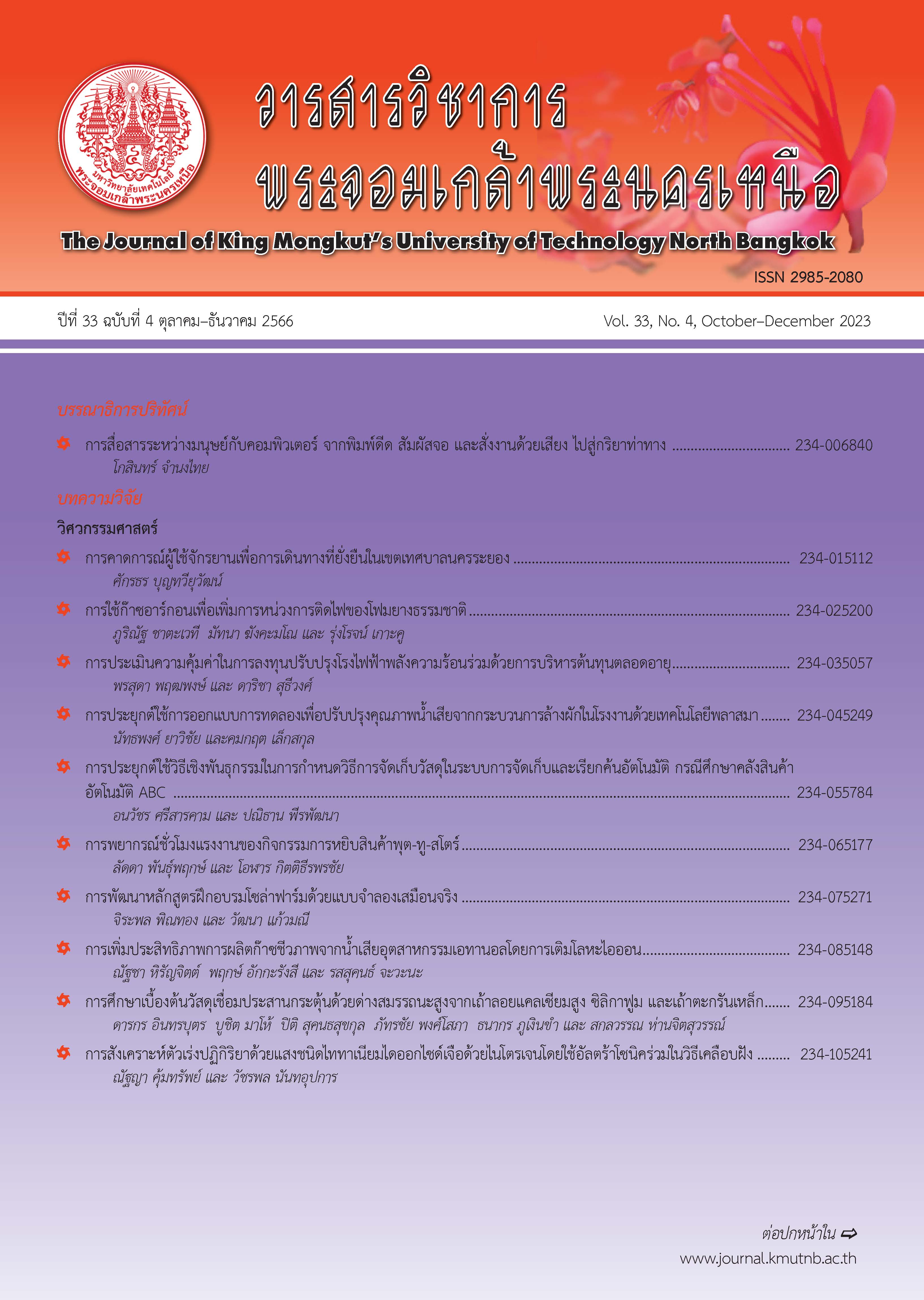รูปแบบการบริหารอุตสาหกรรมการผลิตและบริการข้ามชาติในยุคดิจิทัล
Main Article Content
บทคัดย่อ
การวิจัยครั้งนี้มีวัตถุประสงค์ 1) เพื่อศึกษาองค์ประกอบของการบริหารอุตสาหกรรมการผลิตและบริการข้ามชาติในยุคดิจิทัล 2) เพื่อสร้างรูปแบบการบริหารอุตสาหกรรมการผลิตและบริการข้ามชาติในยุคดิจิทัล และ 3) เพื่อจัดทำคู่มือแนวทางการบริหารอุตสาหกรรมการผลิตและบริการข้ามชาติในยุคดิจิทัล การศึกษาครั้งนี้ใช้รูปแบบการศึกษาแบบผสมผสานเชิงคุณภาพและเชิงปริมาณ เครื่องมือที่ใช้ในการศึกษาเชิงคุณภาพ ได้แก่ การสัมภาษณ์เชิงลึกและการประชุมสนทนากลุ่ม (Focus Group) เครื่องมือที่ใช้ในการศึกษาเชิงปริมาณ ได้แก่ แบบสอบถาม ประชากรที่ใช้ในการศึกษา ได้แก่ ผู้บริหารชาวไทยและชาวต่างชาติ ที่เป็นผู้บริหารในองค์กรธุรกิจอุตสาหกรรมทั้งสายการผลิตและสายการบริการในประเทศไทยการวิเคราะห์ข้อมูลเชิงคุณภาพใช้การวิเคราะห์เชิงเนื้อหา และการวิเคราะห์ข้อมูลเชิงปริมาณใช้สถิติ ค่าความถี่ ค่าเฉลี่ยค่าร้อยละ ค่าเบี่ยงเบนมาตรฐาน และการวิเคราะห์องค์ประกอบเชิงสำรวจด้วยโปรแกรมสำเร็จรูป SPSS ผลการวิจัยพบว่า รูปแบบการบริหารอุตสาหกรรมการผลิตและบริการข้ามชาติในยุคดิจิทัล มีองค์ประกอบทั้งสิ้น 6 องค์ประกอบ ได้แก่ 1) การวางระบบบริหารธุรกิจข้ามชาติ 2) การจัดระบบการบริหารทรัพยากรมนุษย์ 3) การบริหารจัดการองค์กรในภาวะผันผวน 4) การพัฒนาองค์กรและวัฒนธรรมองค์กร 5) การบริหารระบบเทคโนโลยีและการสื่อสารในวัฒนธรรมที่หลากหลาย และ 6) การจัดการ Mindset และการปรับตัว และได้นำรูปแบบการบริหารอุตสาหกรรมการผลิตและบริการข้ามชาติในยุคดิจิทัล ที่ได้รับความเห็นชอบด้วยมติเป็นเอกฉันท์จากผู้ทรงคุณวุฒิในการประชุมสนทนากลุ่ม มาสร้างคู่มือแนวทางการบริหารอุตสาหกรรมการผลิตและบริการข้ามชาติในยุคดิจิทัล และคู่มือแนวทางการบริหารอุตสาหกรรมการผลิตและบริการข้ามชาติในยุคดิจิทัล
Article Details

อนุญาตภายใต้เงื่อนไข Creative Commons Attribution-NonCommercial-NoDerivatives 4.0 International License.
บทความที่ลงตีพิมพ์เป็นข้อคิดเห็นของผู้เขียนเท่านั้น
ผู้เขียนจะต้องเป็นผู้รับผิดชอบต่อผลทางกฎหมายใดๆ ที่อาจเกิดขึ้นจากบทความนั้น
เอกสารอ้างอิง
C. W. Hill, International Business: Competing in the Global Market Place, 7th ed., New York: McGraw-Hill/ Irwin, 2016.
C. Bartlett and S. Ghoshal, Managing Across Borders: The Transnational Solution, New York: Harvard Business School Press, 1989.
N. Bennett and G. J. Lemoine, “What a difference a word makes: Understanding threats to performance in a VUCA world,” Business Horizon, vol. 57, pp. 311–317, 2014.
M. Browaeys and R. Price, Understanding Cross-Cultural Management, 3rd ed., Malaysia: Pearson, 2019.
J. D. Daniels, L. H. Radebaugh, and D. P. Sullivan, International Business: Environments and Operations, 15th ed., Pearson, 2015.
M. Castells, The Rise of the Network Society, The Information Age: Economy, Society and Culture, vol. 1, Oxford: Blackwell, 2015.
D. L. Rogers, The Digital Transformation Playbook: Rethink Your Business for the Digital Age, New York: Columbia Press, 2016.
W. Bodrow, “Impact of Industry 4.0 in serviceoriented firm,” Advances in Manufacturing, vol. 5, pp. 394–400, 2017.
Boston Consulting Group. (2013). Simplifying IT complexity a major opportunity for many companies. [Online]. Available: http:// www.bcg.com/media/PressReleaseDetails. aspx?id=tcm:12-130333
M. E. Porter, The Competitive Advantage: Creating and Sustaining Superior Performance, New York: Free Press, 1998.
P. Dowling, M. Festing, and A. D. Engle, International Human Resource Management, 6th ed., China: Cengage, 2013.
M. B. Goodman, Intercultural Communication for Managers, New York: Expert Press, LLC., 2013.
G. Hofstede, G. J. Hofstede, and M. Minkov, Cultures and Organization: Software of the Mind, n.p.: McGraw-Hill, 2010.
M. W. Lustig and J. Koester, Intercultural Competence: Interpersonal Communication Across Cultures, 6th ed., Pearson, Boston, 2010.
A. Geifman-Broder and N. Zaidman, “The creation and reproduction of headquarterssubsidiary interdependence,” International Journal of Business Communication, vol. 58, no. 3, pp. 307–332, 2017.
P. Cardon, Y. Huang, and G. Power. (2019, February). Leadership communication on internal digital platforms, emotional capital, and corporate performance: The case for leader-centric listening, [Online]. Available: https://journals.sagepub.com/doi/abs/10.1177/ 2329488419828808
E. Darics, “E-leadership or how to be boss in instant messaging? the role of nonverbal communication,” International Journal of Business Communication, vol. 57, no. 1, pp. 3–29, 2017.
F. V. D. Born and V. Peltokorpi, “Language policies and communication in multinational companies alignment with strategic orientation and human resource management practices,” Journal of Business Communication, vol. 47, no. 2, pp. 97–118, 2010.
S. Ehrenreich, “English as a business lingua franca in a german multinational corporation: Meeting the challenge,” The Journal of Business Communication, vol. 47, no. 4, pp. 408–431, 1973.
S. Chandler, A Handbook of Corporate Communication and Public Relations, New York: Routledge, 2004.
J. Fiske, Introduction to Communication Studies, 3rd ed., New York: Routledge, 2011.
P. Kreitz, “Best practices for managing organizational diversity,” Journal of Academic Librarianship, vol. 34, no. 2, pp. 101–120, 2008.
P. Chatsanguthai, “The development model of potential management to work in ASEAN,” Ph.D. dissertation, Department of Industrial Business Development, Faculty of Business and Industrial Development, King Mongkut’s University of Technology North Bangkok, 2014 (in Thai).

